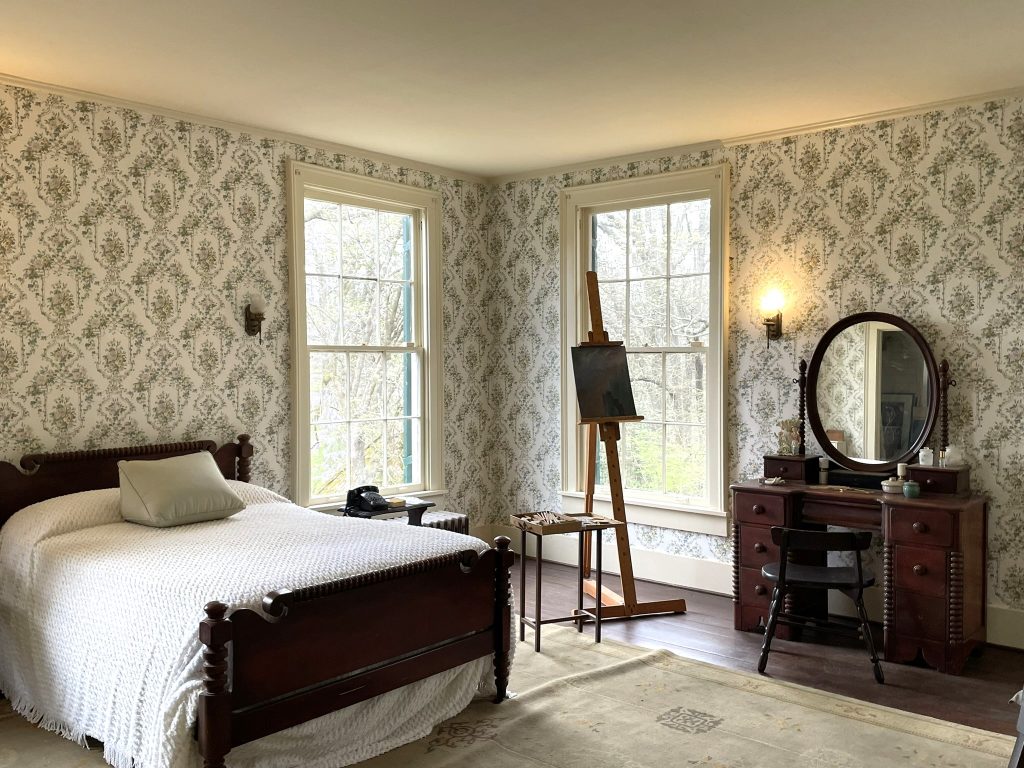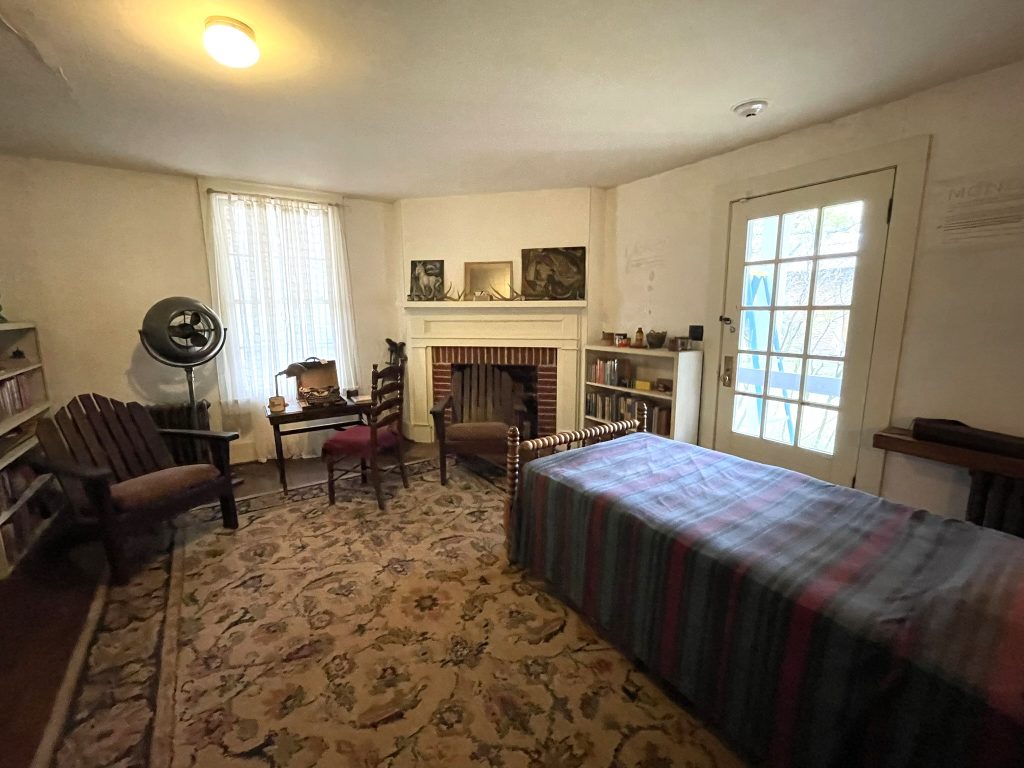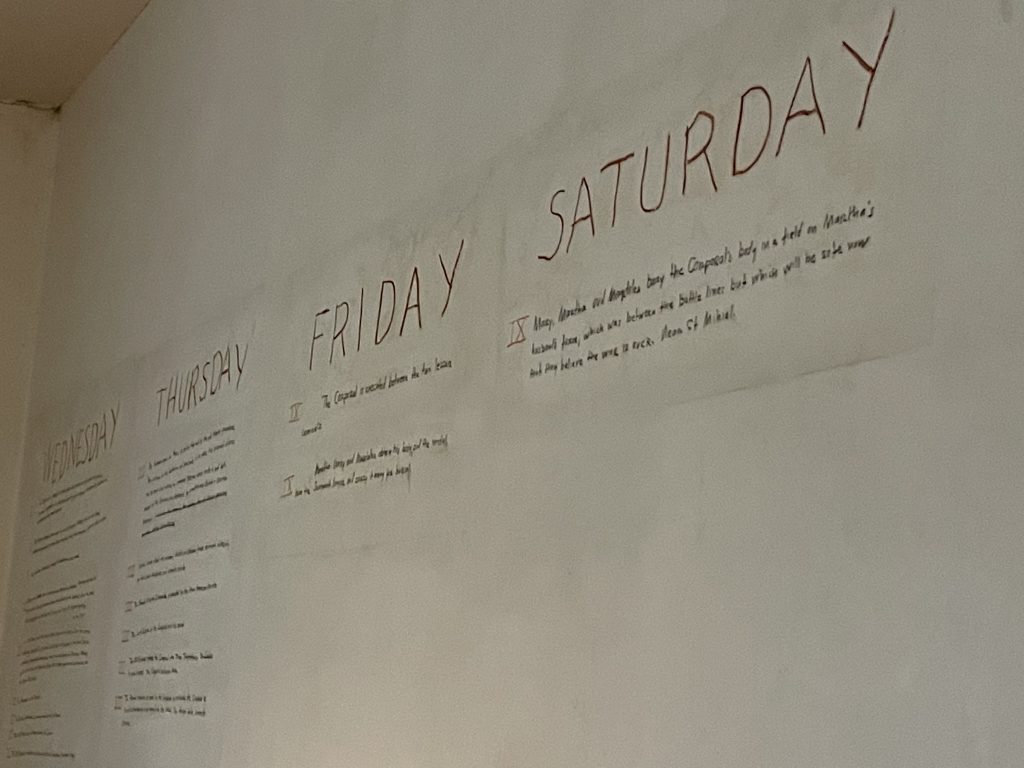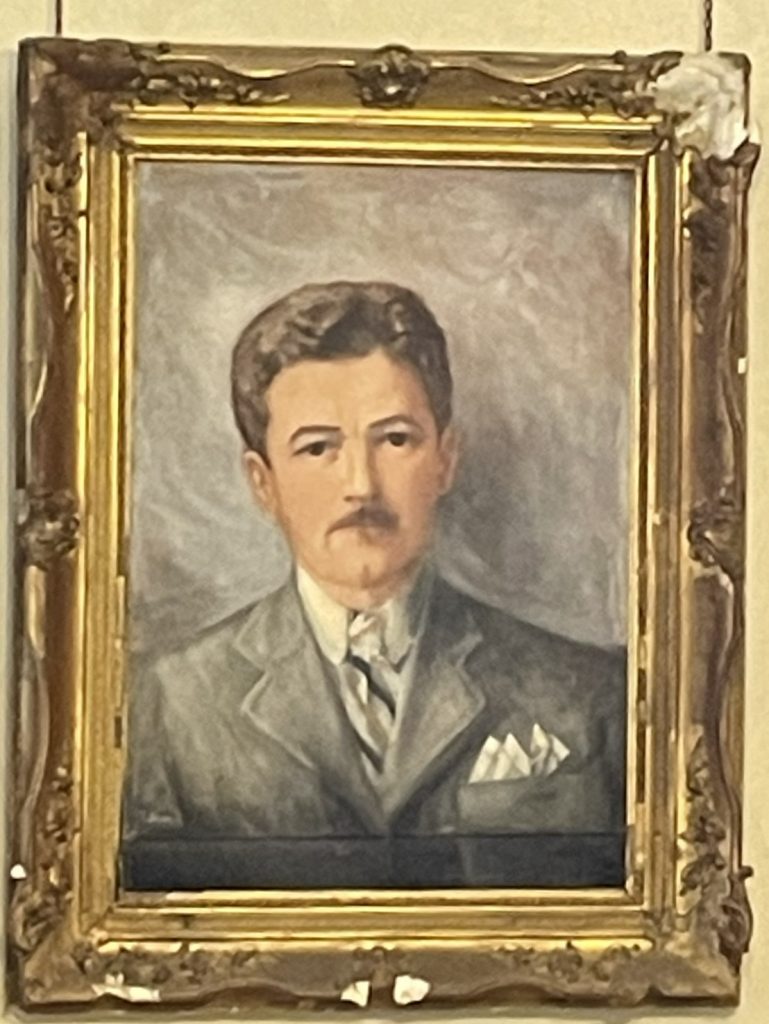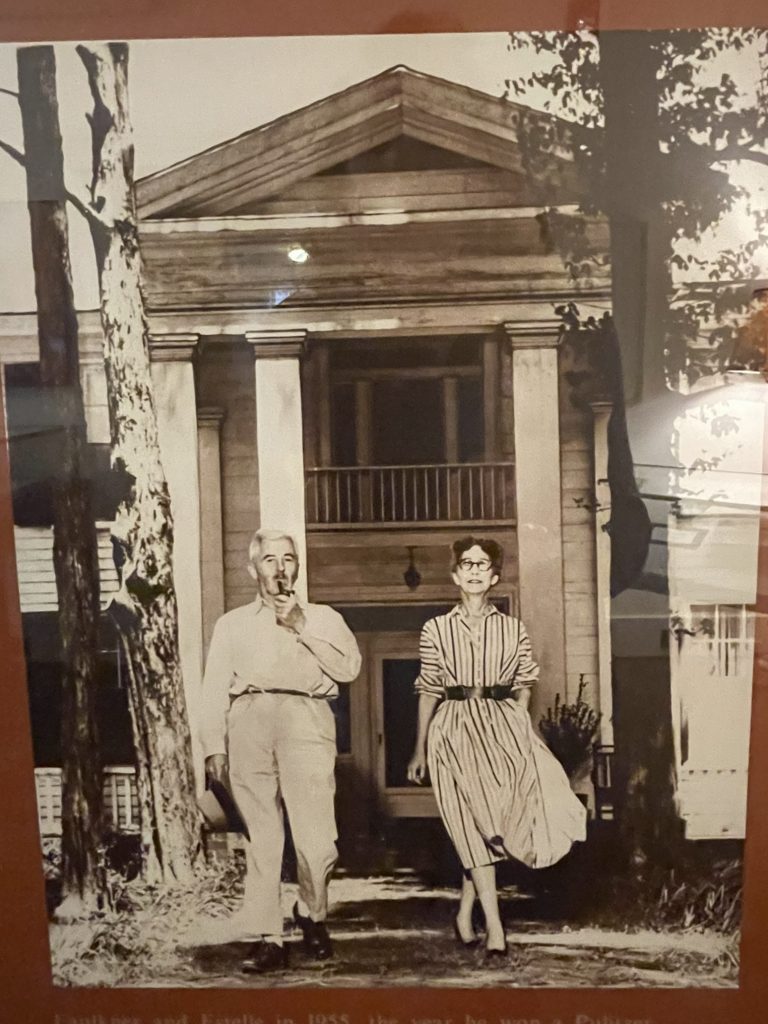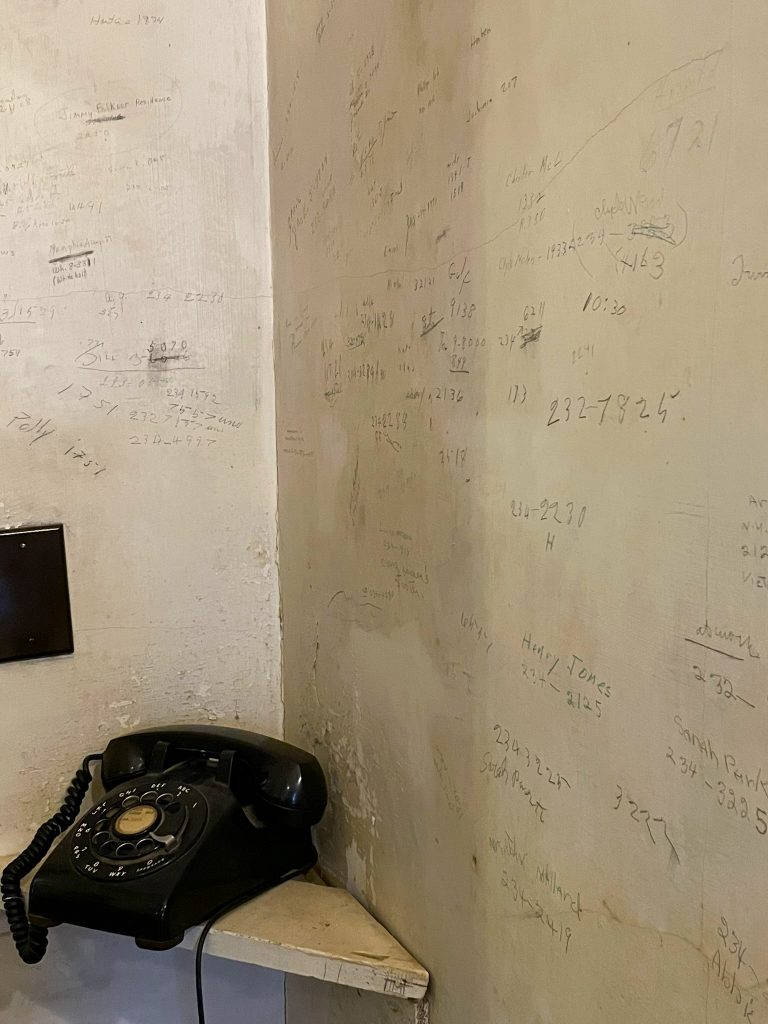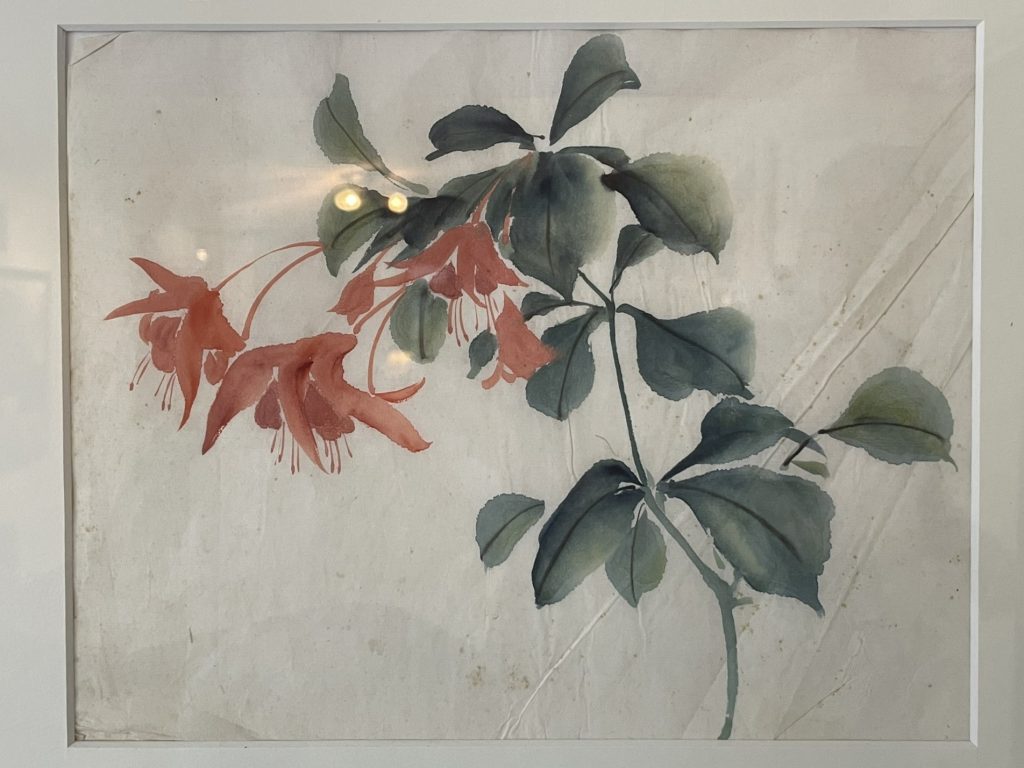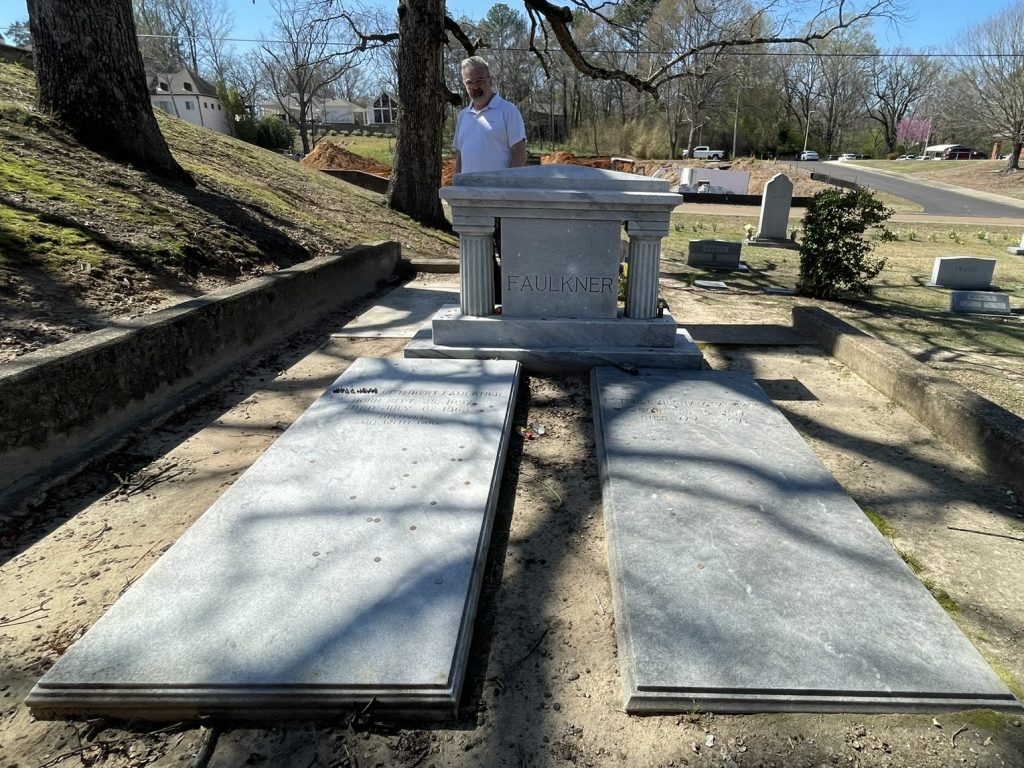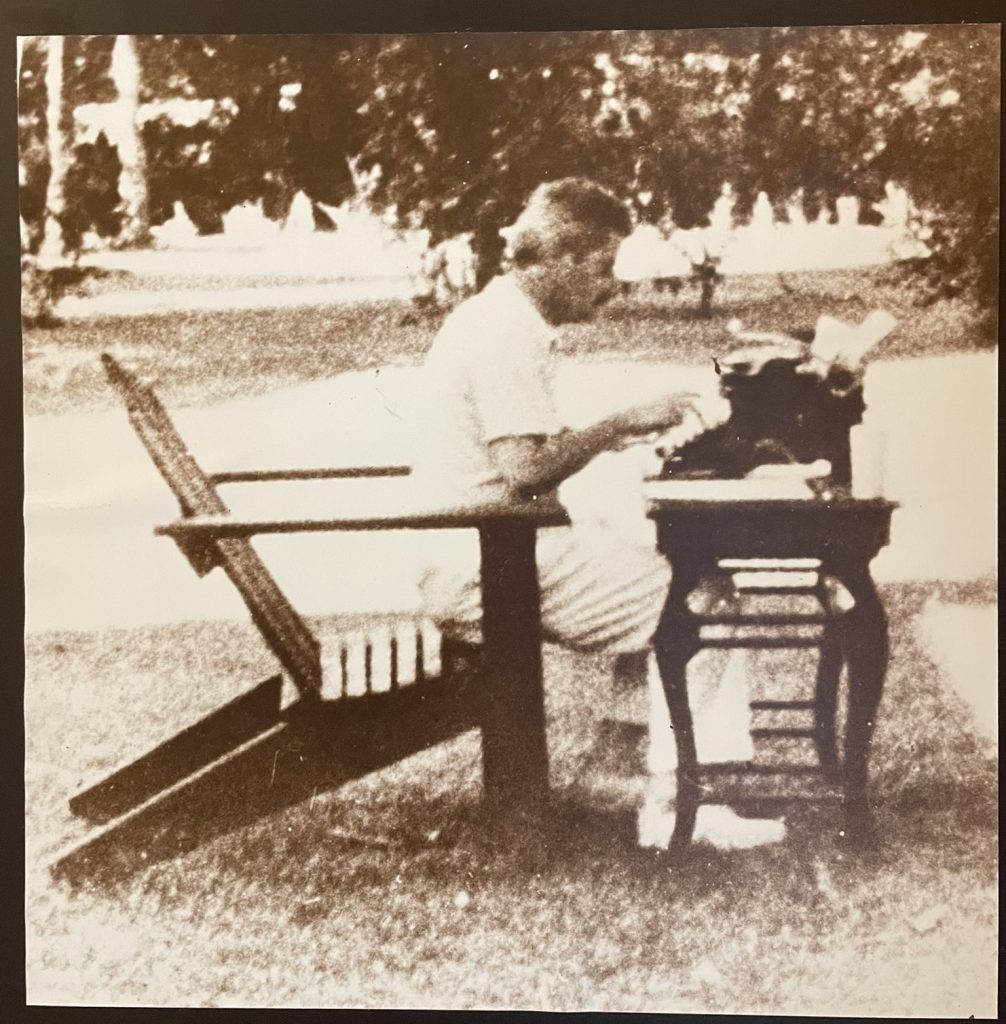I think if you look in the dictionary for “conflicted,” you will find an example of asking Doug if he wants to visit the historic home of an author, but it’s an author he doesn’t much like.
On the one hand, he wants to see the environments where classic books were created. On the other hand, why should he pay his respects to a writer who is unreasonably popular (in his mind, at least)?
Ask him to decide and his head suddenly looks like those cartoons where a character’s head opens up to show the gears hard at work with clouds of smoke billowing out. “Faulkner! All those words! That dark Southern misogyny! His regular racist overtones!” Doug is generally pretty level-headed, but he had some thoughts.
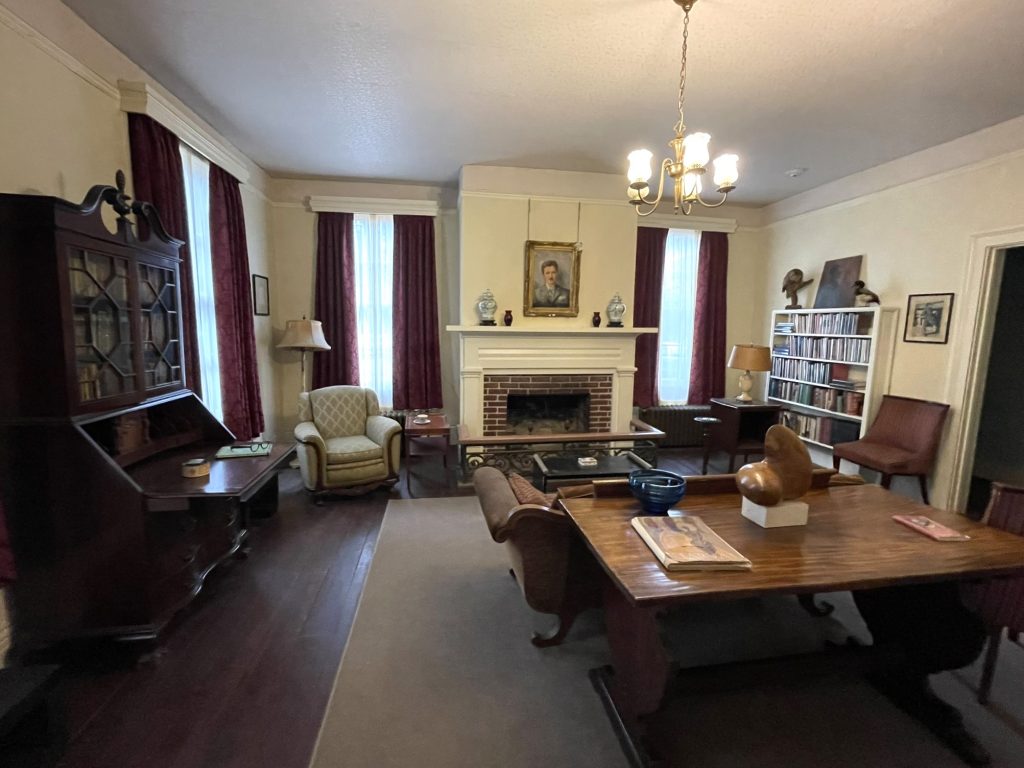
Fortunately, I like visiting historic homes no matter who the residents were, so even though I couldn’t tell you much about William Faulkner myself, Doug agreed to adding it to our itinerary in Oxford, Miss. He decided that after visiting two houses where Jefferson Davis lived, that he ought to be able to handle Faulkner, too.
William Faulkner (1897-1962) was born and raised in Mississippi, and spent much of his adult life there, too. In addition to many short stories, he wrote 13 novels, including The Sound and the Fury (1929) and As I Lay Dying (1930). In 1949 he won the Nobel Prize for literature for “his powerful and artistically unique contribution to the modern American novel.”
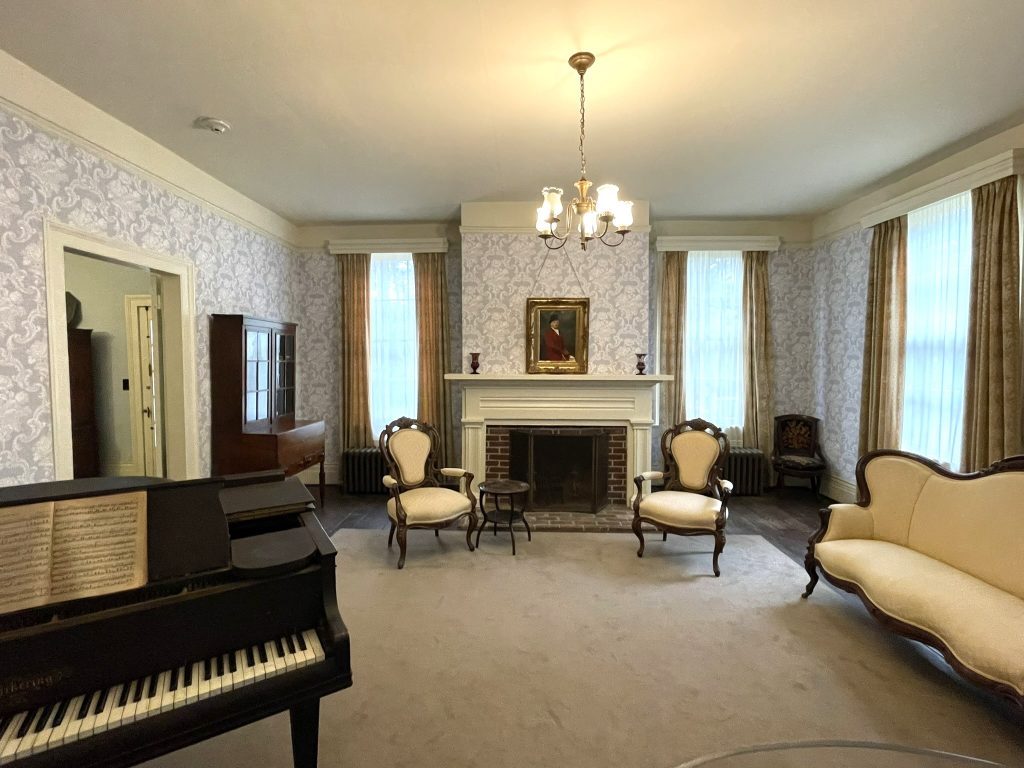
Rowan Oak, in Oxford, Miss., is a Greek Revival house that was built in the 1840s. Faulkner purchased it in 1930, at which time it had been sitting vacant for seven years and was in disrepair. Faulkner did much of the renovating himself.
He lived on the property with his wife Estelle, her children from a previous marriage, and his and Estelle’s daughter Jill, born in 1933.
He lived here until his death in 1962.
His daughter Jill sold the home to the University of Mississippi in 1972, who show the house as it was at the time of Faulkner’s death.
Faulkner named the property after the rowan tree of Scotland, which symbolizes peace and prosperity, and the live oak, which symbolizes strength and solitude. Interestingly, neither of those trees can be found on the property!
The alley of trees standing in front of the home are cedar trees, which were believed to purify the air of the yellow fever virus.
The home sits on four landscaped acres, and is surrounded by 29 additional acres of woods. There’s a short trail through the woods, which we walked looking for birds, naturally.
